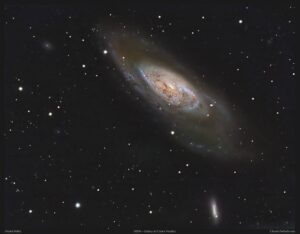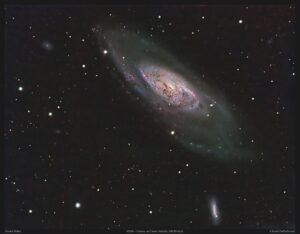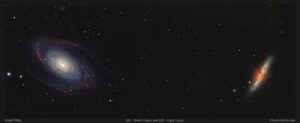M51 (NGC 5194) is a spiral galaxy in the constellation Canes Venatici (Hunting Dogs). In the image, one can see M51 interacting with the dwarf galaxy NGC 5195. The galaxy is fairly close (31 million light years away), which helps make the galaxy appear larger and brighter. Because of this, M51 is a very popular target for astrophotographers.
M51 is in a group of galaxies bound together by gravity. The group called The M51 Group (because M51 is the biggest/brightest of the group) also includes the galaxy M63 – The Sunflower Galaxy.
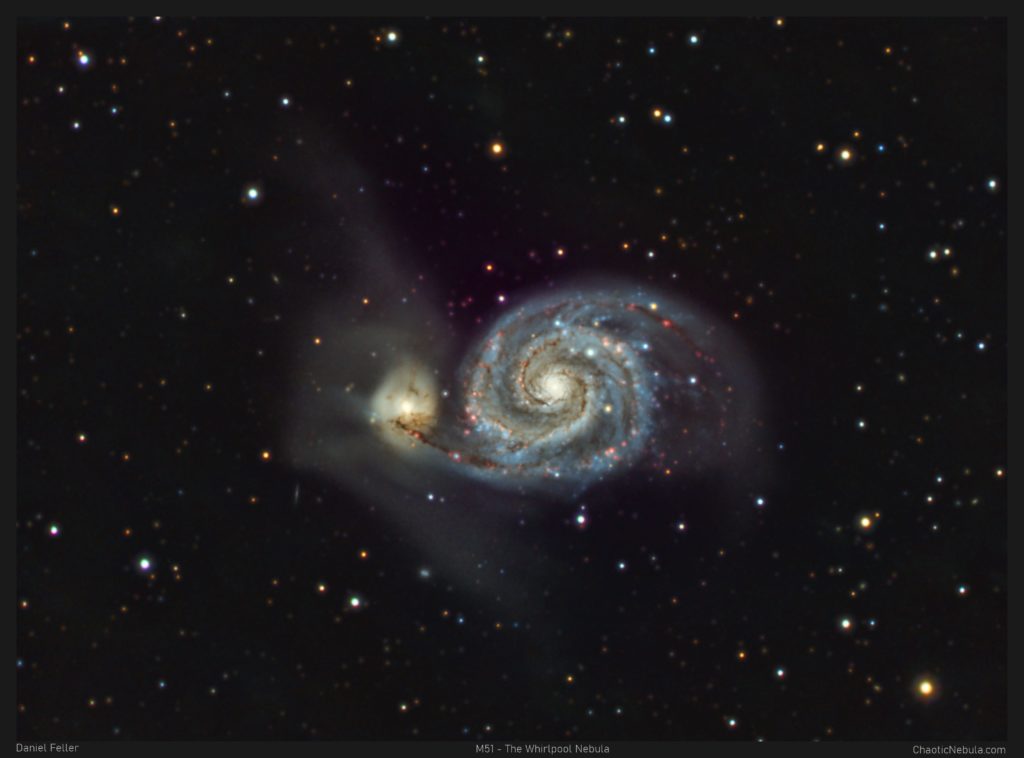
Imaging Details
- Processing Workflow: LRGB+HA
- Red: 60*600 seconds
- Green: 60*600 seconds
- Blue: 60*600 seconds
- HA: 60*600 seconds
- Total Imaging Time: 40 hours
- Imaging Dates (12 nights):
- 12/11/2021
- 12/12/2021
- 1/2/2022
- 1/9/2022
- 1/27/2022
- 2/25/2022
- 2/26/2022
- 3/7/2022
- 3/9/2022
- 3/11/2022
- 3/26/2022
- 3/27/2022
Imaging Workflow
I reworked the LRGB+HA workflow for this image. The faint wisps coming off of the left bright area was extremely dim, just barely visible in the baseline image.
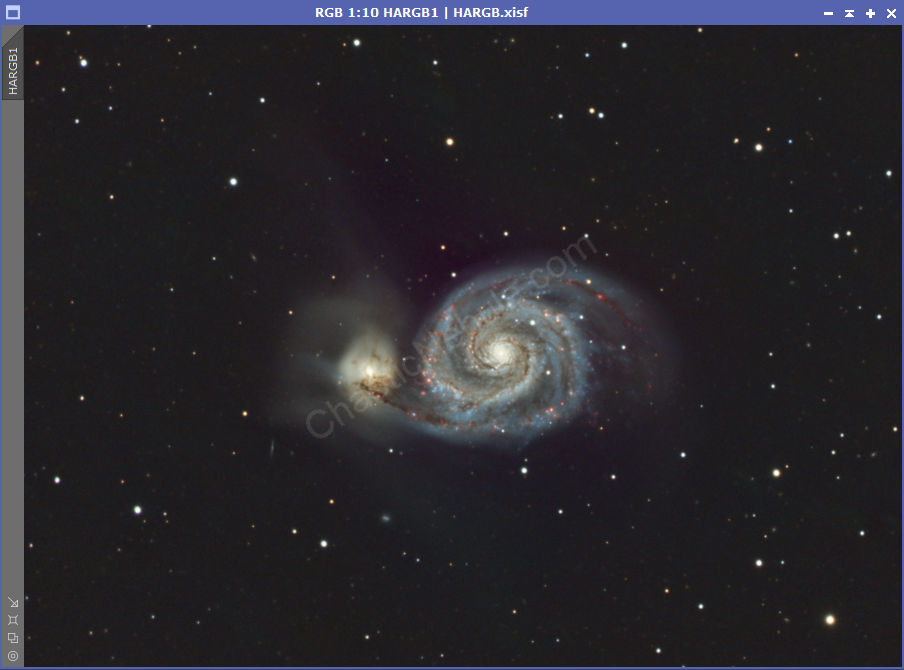
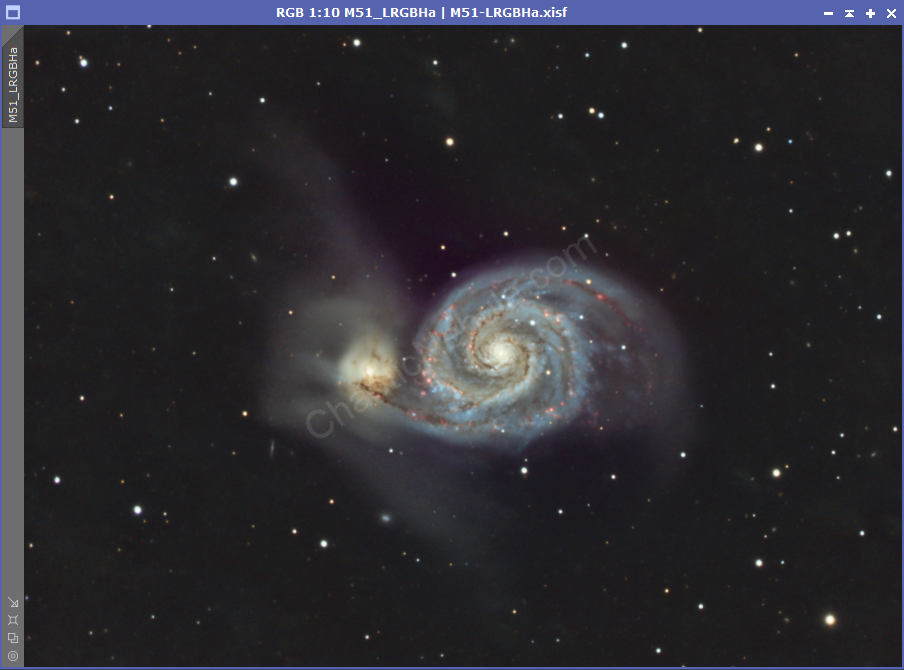
I tried a few approaches and realized with my luminance, if I remove the stars, I can create a range mask that protects the brighter portions and the darker background. This allowed me to gently nudge up the brightness of the faint galaxy arms.
By removing the stars, I’m preventing star bloat. This process took a few cycles to get right, but overall, I’m pleased with the result.
Previous Attempts
I’ve tried to image this galaxy multiple times over the course of a few years, each with varying results.
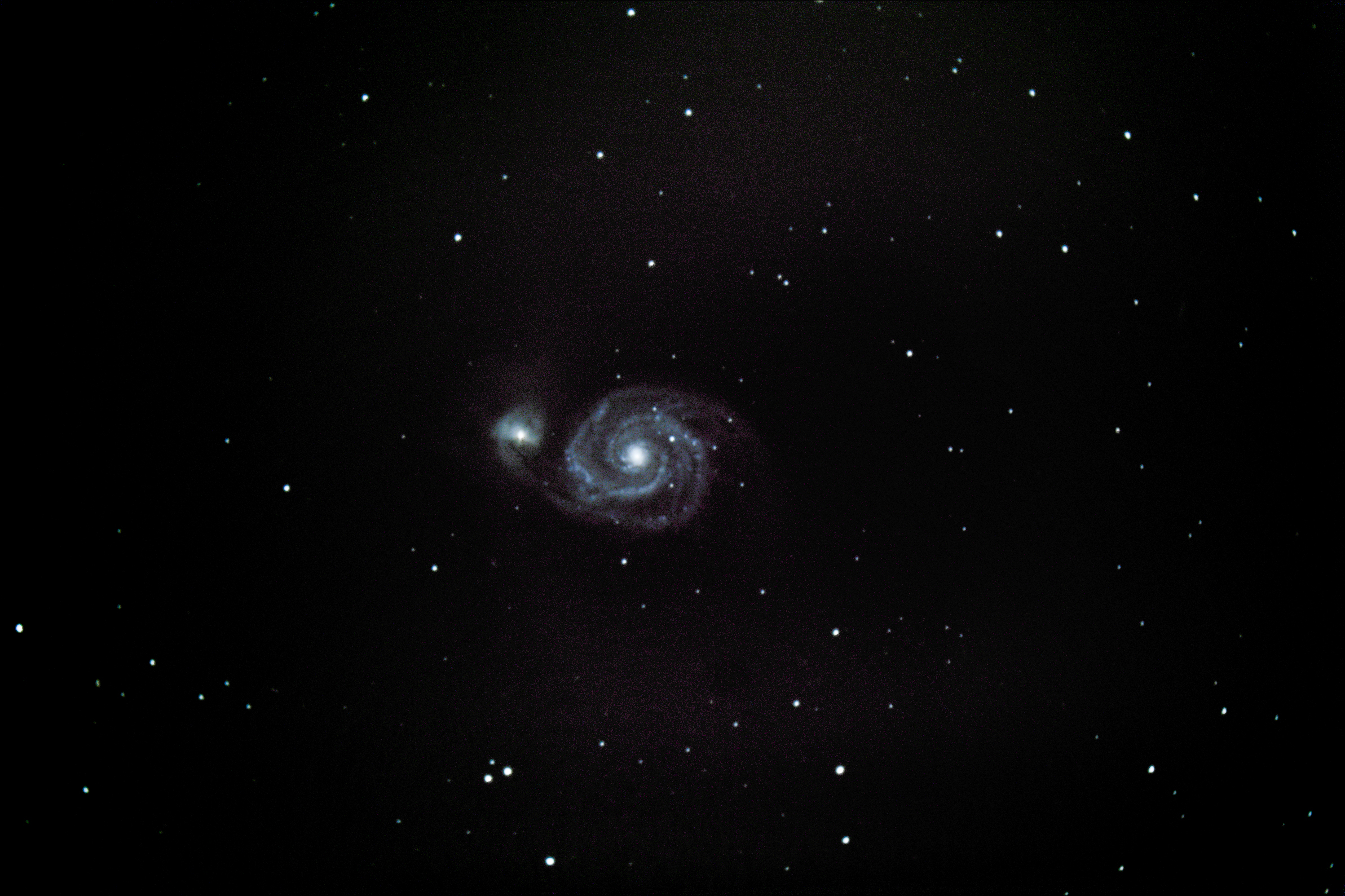

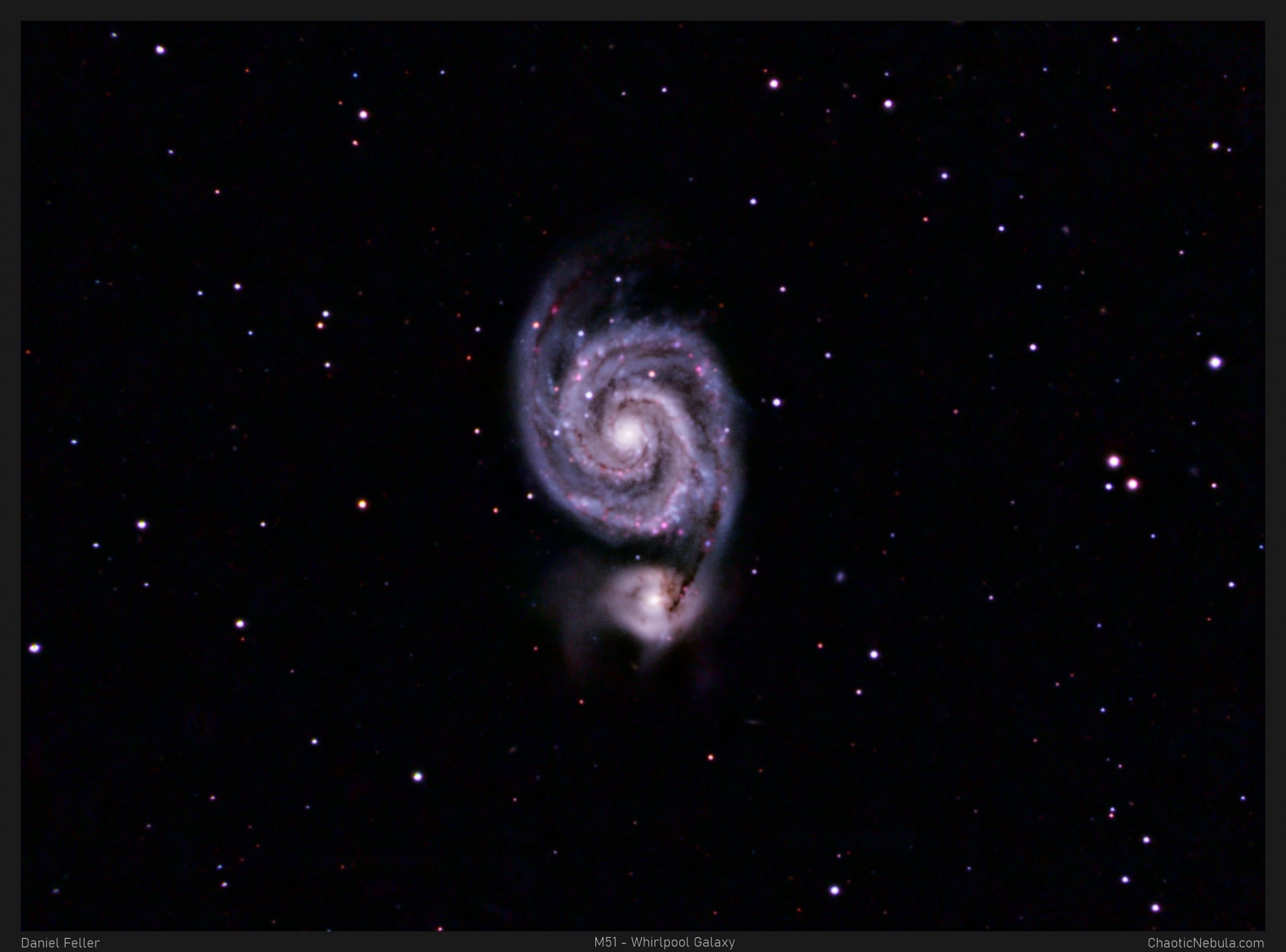
M51 – 2019
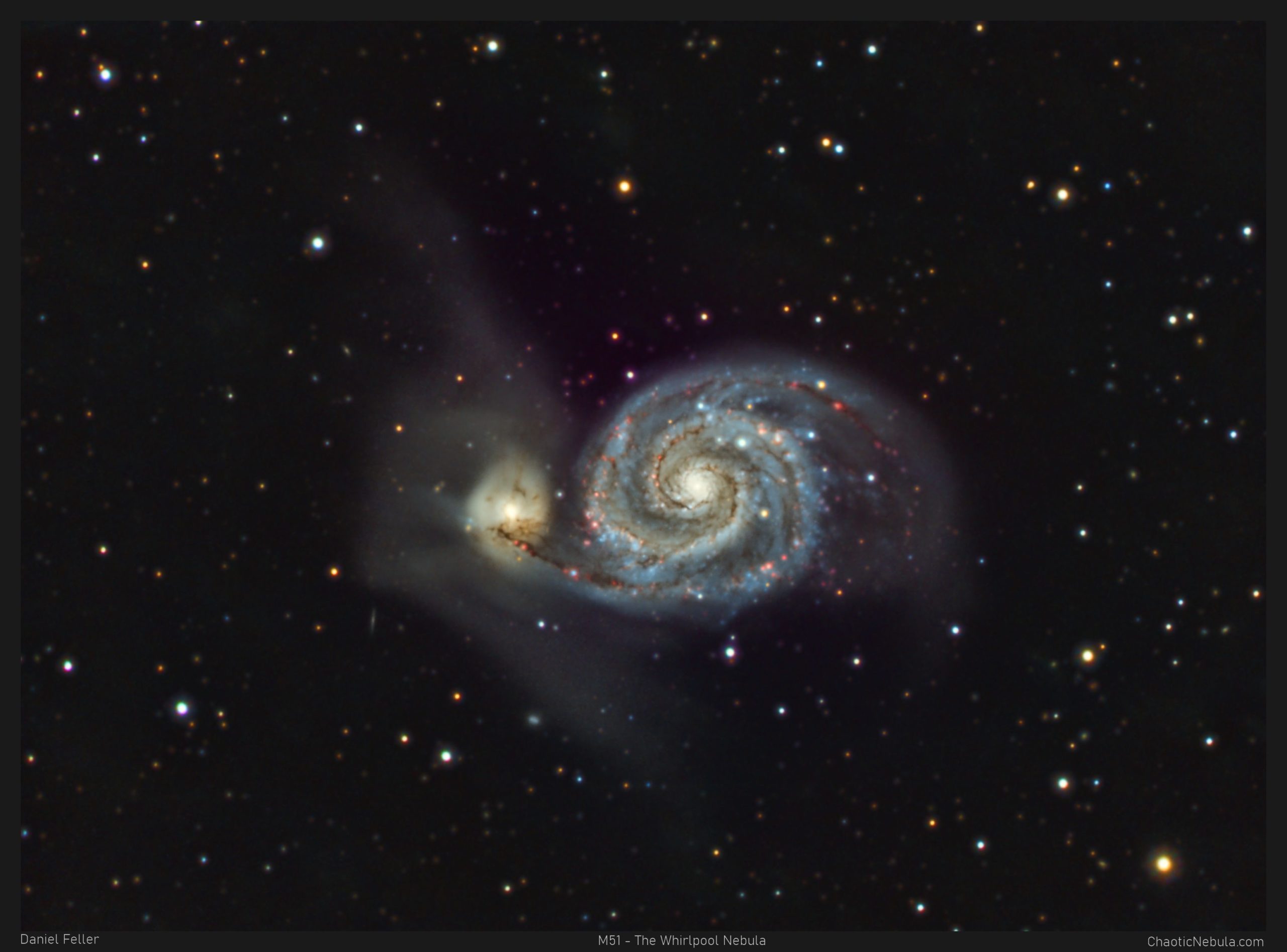
In 2013, I tried this using the Meade LX200 12 inch telescope, with the factory mount and a Canon T1i DSLR. Picture turned out decently, especially for some of my earlier attempts at astrophotography. I was limited to 30 second exposures due to the poor tracking of the standard Meade mount. After aligning and stacking my images with Deep Sky Stacker (DSS), I used Adobe Lightroom to do my photo editing.
Five years later, I upgrade the mount to a Losmandy G11T. My camera also got a minor upgrade to a Canon T5i. I was able to take longer exposures (90 seconds). I again used DSS and Lightroom for the photo editing. This image was better than the one taken in 2013, but I’m missing a lot of the details and brightness due to the light pollution in my area, Bortle Scale 6. At least this is what I believe.
I then upgraded my camera to a monochrome CMOS camera (ZWO ASI 1600mm) with an integrated filter wheel. I also started using PixInsight for all of my image editing. Even though my exposure is still limited to 90 seconds, due to light pollution, the details are much better than what I was able to get in 2017 due to a better camera and better software specifically designed for astrophotography.
And finally, in 2022, I upgraded my focal reducer, which was the cause of a lot of my RGB image challenges. The old reducer (meant for visual astronomy) caused many internal reflections that were impossible to remove with image calibration frames. I upgraded to Starizona’s focal reducer. Results are spectacular. I’ve now determined that I can take RGB and HA images with 10 minute exposures, even with light pollution. I’ve ale drastically updated my PixInsight workflows for LRGB+HA images plus created a new workflow for the luminance channel.
